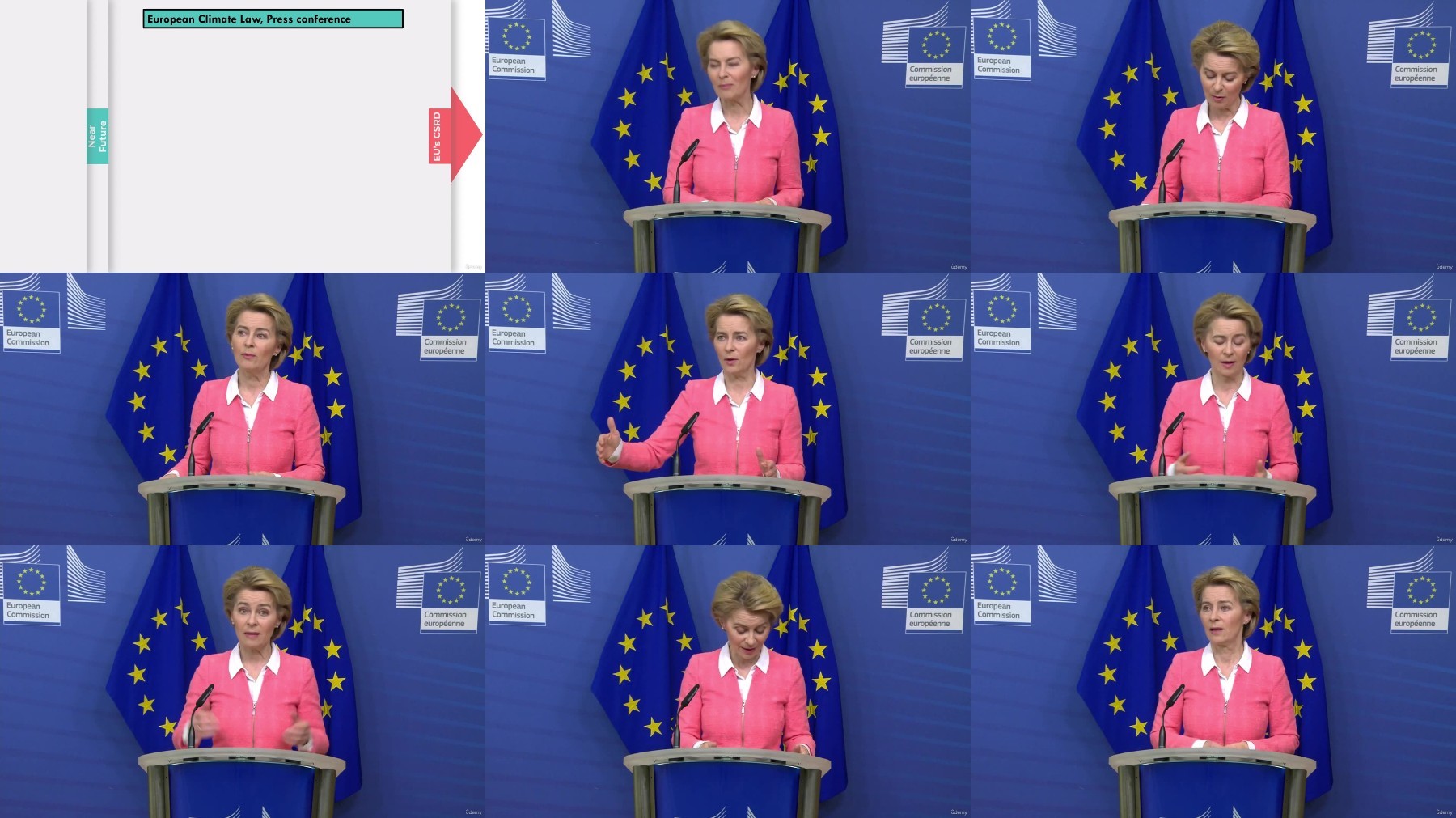
Sustainability And Climate Reporting: The Ultimate Guide
Published 1/2024
MP4 | Video: h264, 1920x1080 | Audio: AAC, 44.1 KHz
Language: English
| Duration: 4h 1m
Sustainability, Climate, Reporting, financial disclosures, TCFD, IFRS S1 and IFRS S2, CSRD, EU Sustainability reporting
What you'll learn
Students will learn the evolution of sustainability and climate reporting requirements since the Exxon Valdez oil spill to the current laws and regulations.
Be able to understand and explain the difference between voluntary and compulsory reporting and how companies report in practice.
Understand what science based targets are and how to set them.
Understand the accounting for scopes 1,2 and 3 and how to disclose these items.
Requirements
You need to be aware of the latest international agreements on climate change from the IPCC regarding the Paris Agreement 2015 and what countries have committed to do in the COP meetings since then. A little bit of research and pre-course reading would be beneficial. If you have seen another training course on climate science for example it would stand you in good stead before you do this course.
Description
This training course is entitled Sustainability and Climate Reporting, the ultimate guide. I have called it that because I have spent a few hundred hours of my time researching the area of reporting and decided to include all the relevant topics that a person who is new to this area would expect. I tried to avoid covering too much technical knowledge to make this training course digestible for everyone in all the different activities in the world of government, non-government and corporate organisations that need to report on how they are tackling sustainability and climate issues.There are three parts to this training course
Overview
Section 1: Introduction
Lecture 1 Introduction
Section 2: Part 1: Building Blocks
Lecture 2 2. Part 1 Building blocks structure
Lecture 3 Section 1.1.1 Exxon Valdez and Ceres
Lecture 4 Section 1.1.2. Valdez principles
Lecture 5 Section 1.1.3 Remembering Joan Bavaria
Lecture 6 Section 1.1.4.1 History of the various entities and timeline to IFRS
Lecture 7 Section 1.1.4.2 Animation of history and timeline to IFRS
Lecture 8 Section 1.1.5. ISSB launch of IFRS S1 and S2, June 2023
Lecture 9 Section 1.1.6. GRI Overview
Lecture 10 Section 1.1.7. GRI Sector standards
Lecture 11 10. Section 1.2.1. Sustainability Accounting Standards Board and Hang Seng Bank
Lecture 12 11. Section 1.2.2. HOLCIM's SASB disclosure
Lecture 13 12. Section 1.2.3. SASB overview by SASB
Lecture 14 13. Section 1.3.1. The Greenhouse Gas Protocol Part 1
Lecture 15 14. Section 1.3.2. The Greenhouse Gas Protocol Part 2
Lecture 16 15. Section 1.3.3. Greenhouse Gas Protocol: what it means for a business
Lecture 17 16. Section 1.4.1. The Science Based Targets initiative
Lecture 18 17. Section 1.4.2 SBTi by Volvo
Lecture 19 18. Section 1.5.1. CDP overview
Lecture 20 19. Section 1.5.2. CDP: emitters should disclose their environmental impact
Section 3: Part 2: TCFD, IFRS and TNFD
Lecture 21 20. Part 2 TCFD and IFRS Introduction
Lecture 22 21. Section 2.1 TCFD
Lecture 23 22. 2.2.1 IFRS S1 Introduction
Lecture 24 23. 2.2.2. IFRS S1 objective to scope
Lecture 25 24. 2.2.3 IFRS S1 Conceptual Foundations
Lecture 26 25. 2.2.4 IFRS S1 Core Content: Governance and Strategy (part 1)
Lecture 27 26. 2.2.5 IFRS S1 Core Content: Strategy (part 2)
Lecture 28 27. 2.2.6 IFRS S1 Core content: Strategy (part 3), Resilience, Risk Management+
Lecture 29 28. 2.2.7 IFRS S1: Sources of Guidance. SASB standards.
Lecture 30 29. 2.2.8 IFRS S2: Objective and Scope
Lecture 31 30. 2.2.9 IFRS S2: Core Content: Governance and Strategy (part 1)
Lecture 32 31. 2.2.10 IFRS S2: Strategy (part 2), Resilience and Climate Scenario Analysis
Lecture 33 32. 2.2.11 IFRS S2: Risk Management
Lecture 34 33. 2.2.12 IFRS S2: Metrics and Targets
Lecture 35 34. 2.2.13 IFRS S2: Industry Guidance
Lecture 36 34.1 2.2.14 IFRS S1 and S2 Conclusion
Lecture 37 35. 2.3.1 Task Force on Nature-related Financial Disclosures
Lecture 38 36. 2.3.2 TNFD Planetary Boundaries Analysis
Lecture 39 37. 2.3.3 TNFD Case study and Early Adopters
Lecture 40 38. 2.4 Part 2 conclusion
Section 4: Part 3 Sustainability and Climate Reporting, Target 2024-2025
Lecture 41 39. Part 3 structure and introduction
Lecture 42 40. 3.1.1. European Green Deal and EU's Climate Law
Lecture 43 41. 3.1.2. European Climate Law press release speech
Lecture 44 42. 3.1.3. EU Reporting evolution
Lecture 45 43. 3.1.4. CSRD Article 19_ sustainability reporting
Lecture 46 44. 3.1.5. CSRD Article 19 part 1
Lecture 47 45. 3.1.6. CSRD Article 19 part 2
Lecture 48 46. Section 3.1.7. CSRD's Double Materiality test
Lecture 49 47. Section 3.1.8 European Sustainability Reporting Standards (ESRS)
Lecture 50 48. 3.1.9 TCFD reconciliation to ESRS
Lecture 51 49. 3.1.10 IFRS reconciliation to ESRS
Lecture 52 50. 3.1.11 Impact Reporting and CSRD conclusion
Lecture 53 51. 3.2.1 The Near Future
Lecture 54 52. 3.2.2 TCFD, IFRS S1 and S2 and Local Laws
Lecture 55 53. 3.2.3 TCFD 2023 status report
Lecture 56 54. 3.2.4 Target 2024-2025 and beyond
Lecture 57 55. 3.2.5 Bangladesh Bank's approach
Lecture 58 56. 3.2.6 United Kingdom's approach
Lecture 59 57. 3.2.7 United States of America's approach
Section 5: Conclusion
Lecture 60 58. Course Conclusion
Beginners to the sustainability and climate reporting subject are the focus of this course. You may already work in a reporting team on general disclosures or are studying finance at University or are working in general business services, an NGO or government services. So, I have designed this course to appeal to all of you.



Sustainability and Climate Reporting the Ultimate Guide

